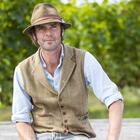Report Synopsis
Frost Protection and Post Frost Event Care in Cool Climate Viticulture
Frost presents a significant challenge to viticulture, particularly in the UK, where climate change is shifting seasonal patterns. The increasing occurrence of early bud burst, followed by spring frosts, threatens grape yields and vineyard sustainability. This report investigates cost-effective, sustainable frost protection strategies that can be implemented in the UK, drawing insights from established viticulture regions worldwide.
Key findings:
Integrated frost protection strategies combining active (e.g., frost fans, sprinklers) and passive (e.g., site selection, soil health) methods are the most effective.
Biodynamic and regenerative viticulture practices enhance vine resilience against frost events by improving soil structure and microclimates.
Temperature monitoring and forecasting tools play a crucial role in early frost detection and mitigation.
International best practices, particularly from New Zealand and Tasmania, offer valuable lessons for UK vineyards, with special regard to site selection.
Economic and environmental considerations must be balanced when choosing frost protection strategies, ensuring long-term sustainability.
Recommendations:
Implement a hybrid frost protection system by integrating active and passive techniques tailored to vineyard-specific conditions.
Invest in real-time weather monitoring technologies to improve frost prediction and response strategies.
Adopt regenerative viticulture practices such as cover cropping, composting, and microclimate management to enhance soil health and vine resilience.
Conduct further research on frost-resistant grape varieties suitable for the UK’s evolving climate.
Collaborate with industry experts and researchers to continuously improve frost protection strategies and share best practices within the viticulture community.
By adopting a multi-faceted approach, UK vineyard managers can mitigate the risks of frost damage while promoting economic and environmental sustainability. This study highlights the importance of proactive planning and adaptation to ensure long-term vineyard productivity and success.
This study examines different frost protection techniques, ranging from traditional methods such as frost fans and sprinklers to organic and biodynamic approaches that focus on soil health. The research involved field visits to New Zealand and Tasmania, where vineyard managers have developed effective methods for mitigating frost damage. Additionally, virtual interviews and desk research provided further insights.
Findings suggest that an integrated approach combining active and passive frost protection methods is most effective. Techniques such as proper site selection, the use of cover crops, and temperature monitoring can significantly reduce frost risk. Additionally, biodynamic and regenerative viticulture practices that enhance soil health contribute to vine resilience against frost events.
This report recommends that UK vineyard managers adopt a multi-faceted frost protection strategy that balances economic viability with environmental sustainability. By learning from international best practices, the UK wine industry can mitigate frost-related losses and improve long-term vineyard productivity.
Frederick Langdale

John Oldacre Foundation

